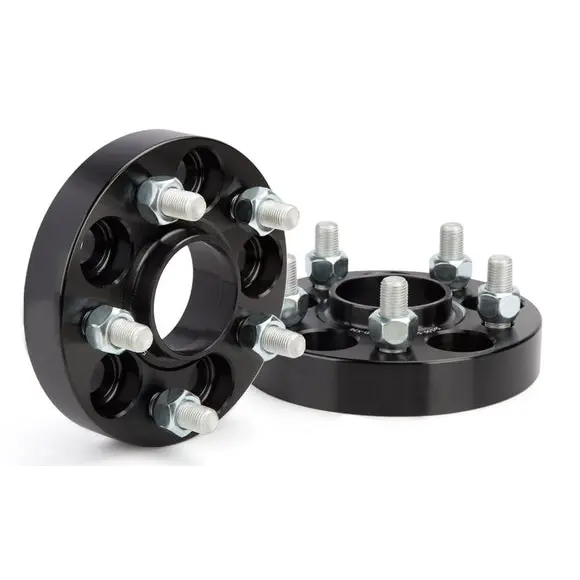Wheel spacer adapters—they can create a smoother ride, accommodate larger rims, or solve tricky fitting issues. But a key question every driver must ask is: Are your wheel spacer adapters safe? The answer is yes, but only if they are manufactured to exacting standards, installed correctly, and precisely matched to your vehicle. Cutting corners can lead to catastrophic failure.Learn more about wheel spacer adapters with JUNWEI.

The Gold Standard: 6061-T6 aluminum alloy is essential for safe wheel spacer adapters. This aircraft-grade alloy undergoes a special heat treatment process ("T6") to achieve an unmatched strength-to-weight ratio and resistance to deformation under extreme stress—exactly what your wheel bearings and studs endure every day.
Beware of counterfeit goods: Avoid suppliers who can't verify that they use aircraft-grade T6 aluminum alloy. Cheap castings or lower-grade materials lack structural integrity and can cause cracking, warping, or shearing. Ask for material certification.
Corrosion concerns: High-quality adapters utilize advanced electroplating or anodizing processes (our ISO-certified factory uses automated production lines for perfectly consistent coatings). This prevents oxidation, which weakens the metal over time—a silent killer in humid or salty climates.
Cheap, mass-produced cast adapters are like time bombs. True safety comes from manufacturers prioritizing material science over profit.
Hub centering is mandatory: The adapter must be machined to exactly match your vehicle's hub bore and the target wheel's bore (the hub centering ring is insufficient for the adapter). This ensures that the weight is borne by the hub, not the bolt/nut, preventing dangerous vibration and bolt shear. Our CNC machining centers guarantee micron-level precision for perfect hub centering.
Bolt/Nut Integrity: Need bolt/nut matching? Must use bolts with a tensile strength of 10.9 or higher, installed with proven torque specifications and a high-quality threadlocker. Using inappropriate or insufficiently strong bolts can lead to disaster.
Thickness and Load Rating: Thinner isn't always better. The adapter must be thick enough to ensure structural rigidity and must specifically meet your vehicle's GAWR (Gross Axle Load Rating) rating. Don't guess—especially for trucks or SUVs.
Torque is crucial: The nuts and bolts securing the adapter to the hub, and the wheel to the adapter, must be tightened in the correct star pattern using a calibrated torque wrench, according to the vehicle and bolt manufacturer's specifications. Re-torque after 50-100 miles.
Clean Surfaces: Ensure the hub, adapter surface, and wheel mounting surface are spotless and free of rust, dirt, or old paint. Any debris will reduce clamping force.
Stay within limits: Wheel Spacer Adapter increases the friction radius and leverage. Understand your vehicle's tolerance for offset changes. Over-setting can prematurely damage the suspension and bearings.
